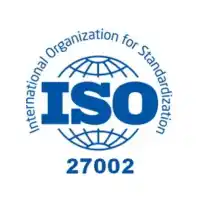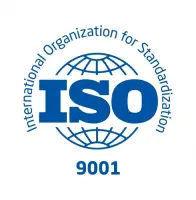
Key Takeaways
- Single Vendor Apps: Ideal for individual restaurants or food businesses looking to strengthen their brand identity and streamline operations.
- Multi-vendor Apps: Best for marketplace-style platforms that offer customers a variety of restaurants and cuisines under one roof.
- Single Vendor Pros: Easier integration, strong branding, simplified management.
- Multi-Vendor Pros: Wider customer reach, better scalability, reduced marketing burden.
- Cost and Complexity: Multi-vendor apps are generally more complex and expensive to build, but offer higher scalability and flexibility.
Choosing between a single-vendor and a multi-vendor food delivery app can define the future of your restaurant’s online growth. In today’s digital dining era, customers expect convenience, variety, and speed, and the right app model determines how well you deliver that experience.
With the global food delivery market projected to exceed $450 billion by 2025, understanding these two business models isn’t just about features or cost; it’s about scalability, brand control, and long-term sustainability.
If you’re a restaurant owner, startup, or entrepreneur wondering which approach best suits your business goals, this blog breaks down 7 key factors to help you decide between a single-vendor app and a multi-vendor marketplace. You’ll learn the pros, cons, and real-world examples of both, so you can invest wisely and grow smarter.
What is a Single Vendor App?
A single vendor app is a food delivery app that caters to a single restaurant, coffee shop, bar, cloud kitchen, or other food business. With the help of this, your potential customers can easily order their favorite meal from your restaurant with just a few taps from their mobile phones.
The primary purpose of the single vendor app is to:
- Build strong brand visibility.
- Create the app according to your requirements.
- Provide an efficient platform for users to place their orders.
In addition, with the single vendor food ordering app, coordination, communication, and supply become easier.
Examples: Pizza Hut, Domino’s, and McDonald’s
Pros and Cons of Single Vendor
Look at the below and understand the pros and cons of using a single vendor approach.
| Pros | Cons |
| Time-efficient option: Working with a single vendor simplifies the procurement process, reducing the time spent on negotiations and onboarding. | Dependence risk: Relying on one vendor can create risks if they face operational issues, go out of business, or fail to meet service expectations. |
| Affordable: Often, vendors offer discounts for long-term contracts, making it a cost-effective choice. | Limited features: Single vendors may not offer the breadth of features available from multiple suppliers, potentially limiting functionality. |
| Lower integration difficulty: A single vendor provides a more seamless integration of products and services, minimizing compatibility issues. | Reduced bargaining power: Working with only one vendor can weaken your negotiating position, leading to less favorable terms. |
Supercharge your deliveries with Enatega.
Launch NowWhat is a Multi Vendor App?
The multi vendor food delivery app is another well-known food app where customers can choose from a wide range of restaurants. It is undoubtedly the most result-oriented and effective strategy to increase the adaptability of your business. Online food ordering restaurant owners will simply divide the commission for each order placed via their meal delivery app.
Moreover, in 2021, 12% of e-commerce businesses were planning to turn into a multi-vendor marketplace.
The features of multi vendor and single vendor are the same except for the vendor panel’s features.
The most common multi vendor food ordering apps are:
- Uber Eats
- DoorDash
- Postmates
- Grubhub
- Zomato
Want to get a food ordering app like a Grubhub clone, UberEats clone, Foodpanda clone, etc? Then contact us now.
Pros and Cons of Multi Vendor
| Pros | Cons |
| Vast variety of products: Access to a broader range of products and services from different vendors, allowing for better customization and flexibility. | High operational cost: Managing multiple vendors can lead to increased administrative and operational costs. |
| Reduce marketing efforts: With multiple vendors, marketing can target diverse audiences, potentially reaching more customers and markets. | High implementation risk: Integrating solutions from various vendors can be complex and may result in compatibility issues or project delays. |
Features of a Single Vendor and Multi Vendor App
Below are the main features of the single vendor and multi vendor food delivery app solution.
| Features of a Single Vendor and Multi Vendor Food App | |||
| Customer App | Restaurant App | Rider App | Admin Dashboard |
| Account creation | Push notifications | Alerts and notifications | Manage restaurants |
| Browse menu | Print invoice | Google map integration | Manage riders |
| Search restaurants | Order history | Real-time chat | Manage inventory |
| Order tracking | Change restaurant status | Order history | Manage earnings |
| In-app chat | Order receiving updates | Change status | Manage offers |
| Different theme support | Replies to customer feedback | Route optimization | |
| Multi-language | Accept/reject orders | Manage earnings | |
| Check previous order history | Accept or reject the delivery order | ||
| Delivery options | |||
| Multiple payment options | |||
| Add restaurants | |||
| Alerts and notifications | |||
| Reviews and feedback | |||
| Order instructions | |||
Single Vendor Vs Multi Vendor Strategy
What is the difference between a single and a multi-vendor?
Look at the table below and know the main differences between single vendor and multi vendor.
| Feature | Multi Vendor | Single Vendor |
| Flexibility | Offers high flexibility with a wide range of options and capabilities. | Limited flexibility; options are constrained to what the vendor offers. |
| Cost | Potentially lower costs due to competitive pricing among vendors. | Costs may be higher as there is no competition driving prices down. |
| Management Complexity | More complex; requires effective coordination, communication, and management of multiple relationships. | Simplified management; one point of contact for all needs. |
| Risk | Diversified risk; if one vendor fails, others can fill the gap. | Higher risk; dependency on a single vendor can lead to significant issues if they fail. |
| Quality Control | Quality can vary significantly; challenges in maintaining consistent standards across vendors. | Easier quality control; more straightforward to monitor and enforce standards. |
| Customization | Greater options for tailored solutions; can mix and match services/products from various vendors. | Limited customization; dependent on the offerings of the single vendor. |
| Vendor Reliability | Reliability can vary; it may require thorough vetting and ongoing assessment of multiple vendors. | Easier to assess and build a relationship with one vendor for reliability. |
| Scalability | It can be more scalable due to the ability to add or change vendors as needed. | Scalability may be more challenging; growth is tied to the single vendor’s capabilities. |
| Contractual Obligations | More complex contracts may involve multiple agreements and terms. | Simpler contractual obligations; typically, one contract governing the relationship. |
| Support and Service | Varies by vendor; support may be inconsistent. | More consistent support; easier to manage service level agreements (SLAs). |
Benefits of a Single Vendor and Multi-Vendor Food Delivery App
Several advantages are provided by a single vendor and multi vendor food ordering system.

Convenience
Convenience is the main benefit provided by the online food delivery management software. With these platforms, customers can easily get what they want, and restaurants can build a strong image of their brand.
Streamline Business Operations
The restaurants can streamline their business operations and manage all the tasks without hassle. With the help of these platforms, restaurants can better serve their customers and attract more customers. In addition, it reduces the work done manually and eliminates a lot of paperwork.
Faster Response
The restaurants can quickly respond to customer queries and deliver all the orders on time. With a free open-source online food ordering system, restaurants can pay attention to other tasks rather than doing the same task.
Direct Communication
Direct communication with the restaurant improves customer-vendor relationships. Customers can easily communicate with the restaurant about their order and add special instructions according to their preferences, dietary needs, and tastes. It fosters customer loyalty and repeat business.
Wide Range of Choices
Customers have many choices in the multi-restaurant online ordering system. Various restaurants have different menus, so customers can easily order their favorite food from one platform.
Several cuisines are available on the multi-restaurant delivery software. There is no need to download multiple restaurant apps; download one app and place your order.
Online Presence
Building an online presence is an important benefit that these platforms provide to food businesses. With a food delivery management app, restaurants can build a strong online presence, and customers can quickly discover the eatery and order food through the restaurant’s food delivery app. It will help to attract and retain more customers and generate more orders. The online presence is a valuable tool to market your restaurant in remote areas.
Better Reach
The white label food delivery app can help connect with various customers, restaurants, food joints, and cafes on the smartphone. Reaching out to the target audience is relatively easy and simple. Through social media platforms, promote your brand.
Personalization
Running a customized approach for a customer is now feasible with food-ordering apps. Users will likely use the food app more regularly if customization features are available.
To give your customers a more tailored experience, you can send notifications in their native language if your app has a multilingual feature. You can text or notify the customer about a discounted offer on their favorite dish if they haven’t used it in a while.
Factors to Consider When Deciding Between Multi Vendor Vs. Single Vendor
Here is a list of factors you should consider before selecting the best option for your company.
| Factors | Multi-Vendor | Single Vendor |
| Procurement Effort | Dealing with a lot of different vendors | Dealing with a single vendor |
| Cost | Costs more and has less flexibility in scaling | More affordable price and easy scale |
| Implementation Difficulty | Requires more effort to set up | Less challenging to install |
| Staff Training | Need more training | You and your staff need less training |
| Product Upgrades | Get upgrades more often | See major updates to single vendor solutions much more infrequently. |
| Compatibility | Easily manage compatibility issues. | Fewer compatibility issues due to centralized management. |
| Time and Convenience | Save time and hassle | Sometimes difficult to manage due to the larger volume of administrative and managerial duties |
Cost of Single Vendor and Multi-Vendor Food Delivery App
Knowing the cost of the open source online ordering system is vital before using it for your business. The cost of the single vendor and multi vendor food ordering app depends on these factors:
- Platform
- Functionality
- Complexity
- Ordering technology
Moreover, compare the prices of different companies for the online food ordering systems, then pick the one that provides the budget-friendly rates.
Supercharge your deliveries with Enatega.
Launch NowFAQs
1. What is an example of a single vendor?
Nike, Apple, and Netflix are examples of a single vendor. These companies own and operate their online stores and don’t rely on a marketplace like Amazon or Etsy to sell their products.
2. Is Amazon a multi-vendor?
Yes, Amazon is a multi-vendor platform. It allows numerous individual sellers to list and sell their products on the Amazon marketplace.
3. Does Shopify support multi-vendor?
Shopify does not natively support multi-vendor functionality, but you can implement it using third-party apps like Spocket or Multi Vendor Marketplace.
4. How to make a multi-vendor marketplace?
To make a multi-vendor marketplace, build a platform that connects multiple sellers with buyers by integrating vendor dashboards, product listings, payment gateways, and order management.
5. How much does it cost to build a multi-vendor marketplace?
The cost to build a multi-vendor marketplace ranges from $30,000 to $200,000+. However, it depends on features, design complexity, and whether you need mobile apps or just a web platform.
Conclusion
Now that you understand the key differences between single-vendor and multi-vendor food delivery apps, the right choice ultimately depends on your business model, goals, and growth vision.
Choose a single-vendor app if you want complete control over your brand, operations, and customer experience. It is perfect for individual restaurants or cloud kitchens.
Choose a multi-vendor app if you aim to build a marketplace platform that brings multiple restaurants under one digital roof. It is ideal for scaling, variety, and greater market reach.
No matter which model you choose, building a high-performing, scalable, and user-friendly app is vital. That’s where Enatega comes in, a proven white-label food delivery solution that helps both single and multi-vendor platforms with advanced features.
Ready to launch your food delivery app?
Book a free demo with Enatega today and explore how you can launch your restaurant app faster.















 IOS
IOS Android
Android Web
Web




